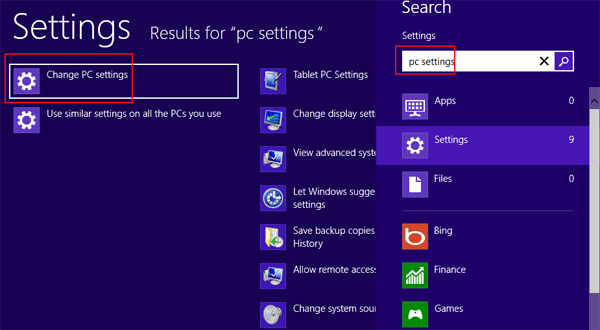
Configuring PC settings in Windows 8 is essential for tailoring your computing experience to suit your preferences, optimizing system performance, and ensuring that your device operates smoothly and efficiently. Windows 8 offers a wide range of configuration options and settings that allow you to customize various aspects of your device, from display and sound settings to network and privacy preferences. In this comprehensive guide, we’ll explore everything you need to know about configuring PC settings in Windows 8, from accessing the settings menu to adjusting individual options effectively.
Understanding PC Settings:
PC settings in Windows 8 encompass a broad range of options and features that allow users to personalize and customize their devices. These settings are divided into several categories, each focusing on different aspects of system configuration and customization. Here are some of the main categories of PC settings in Windows 8:
- Personalization: Customize the appearance of your device, including background images, colors, lock screen, and start screen layout.
- Accounts: Manage user accounts, passwords, and synchronization settings for Microsoft services such as OneDrive and Outlook.com.
- Privacy: Control privacy settings related to location services, camera access, microphone access, app permissions, and more.
- Network & Internet: Configure network settings, including Wi-Fi, Ethernet, VPN, and proxy settings.
- Time & Language: Adjust date and time settings, language preferences, region settings, and keyboard layouts.
- Ease of Access: Customize accessibility options such as text size, magnifier settings, on-screen keyboard, and narrator settings.
- Update & Security: Manage Windows Update settings, check for updates, configure security options, and access recovery options.
Accessing PC Settings:
There are several methods for accessing PC settings in Windows 8:
- Charms Bar: Swipe in from the right edge of the screen (or press Win + C) to open the Charms bar, then select “Settings” and click or tap on “Change PC settings.”
- Start Screen: From the Start screen, click or tap on your account picture in the top-right corner, then select “Change account settings” to access account-related settings.
- Control Panel: Open the Control Panel and navigate to “System and Security” > “Action Center” > “Change Action Center settings” to access some PC settings.
Configuring PC Settings:
Once you’ve accessed PC settings, you can customize various options according to your preferences and needs:
- Personalization:
- Customize the background, colors, lock screen, and start screen layout to personalize your device’s appearance.
- Accounts:
- Add or remove user accounts, change account settings, and manage synchronization settings for Microsoft services.
- Privacy:
- Control privacy settings for location services, camera access, microphone access, app permissions, and more to protect your personal information.
- Network & Internet:
- Configure Wi-Fi, Ethernet, VPN, and proxy settings, manage data usage, and troubleshoot network connections.
- Time & Language:
- Adjust date and time settings, change language preferences, and configure region settings to suit your location and language preferences.
- Ease of Access:
- Customize accessibility options such as display settings, keyboard shortcuts, mouse settings, and other accessibility features to accommodate your needs.
- Update & Security:
- Manage Windows Update settings, check for updates, configure security options, and access recovery options to keep your device up-to-date and secure.
Tips for Effective Configuration:
- Explore Settings: Take the time to explore each category of PC settings to familiarize yourself with the available options and features.
- Customize to Your Needs: Customize PC settings according to your preferences and needs to optimize your computing experience.
- Stay Updated: Regularly check for updates and security patches in the Update & Security settings to ensure your device is up-to-date and secure.
- Review Privacy Settings: Review and adjust privacy settings to control how your device collects and uses your personal information.
Conclusion:
Configuring PC settings in Windows 8 allows you to personalize your device, optimize performance, and ensure a smooth and efficient computing experience. By accessing and adjusting PC settings effectively, you can tailor your device to suit your workflow, enhance productivity, and make the most of Windows 8’s features and capabilities. So, whether you’re adjusting display settings, managing user accounts, or configuring network preferences, PC settings provide the flexibility and versatility you need to customize your Windows 8 device to meet your needs and preferences.